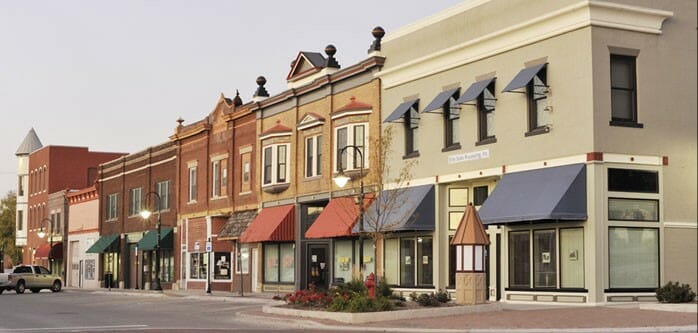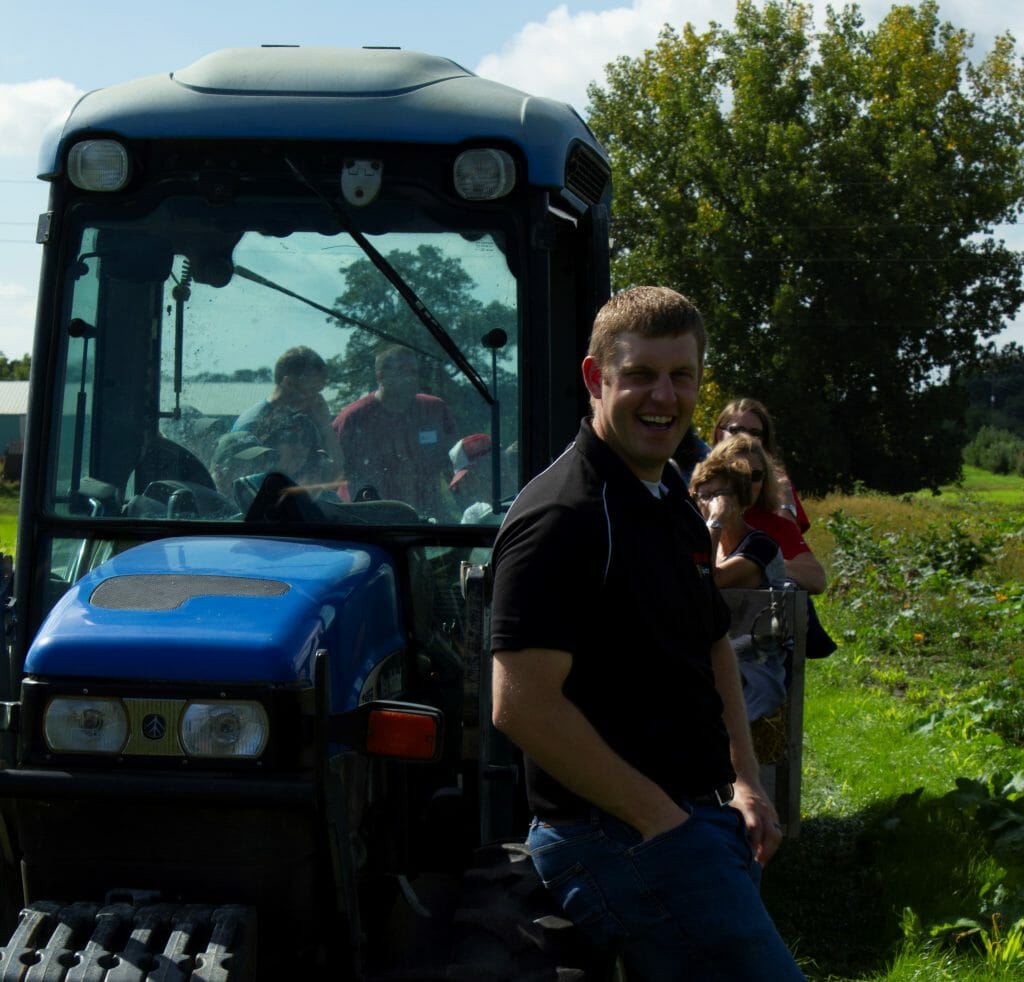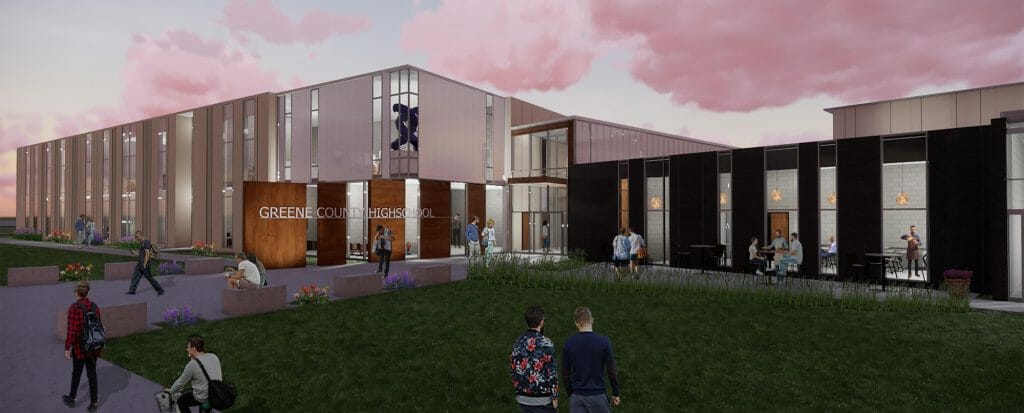Growing Rural Communities: What Works?
Practical Farmers members create community across Iowa by building connections with others who are curious and interested in learning from each other. But members are creating community at a local level too. Amber Mohr and her family moved to her grandparents’ farm near Avoca to raise food and her family at Fork Tail Farm. Chris Deal and his family moved back to the family farm near Jefferson, Deal’s Orchard. Both Amber and Chris wanted to raise their kids in rural Iowa. Together, Amber and Chris led a session at the 2019 annual conference, where they shared their experiences in rural community development. Below are some excerpts from their presentation.

Avoca, located in southwest Iowa, is one of 54 active Main Street Iowa communities as of January 2019.
Amber Mohr
Amber runs Avoca’s Main Street Iowa Program. At the time of the presentation, there were 54 active Main Street Iowa communities. Main Street programs revitalize downtown economies. They are volunteer-driven, focusing on economic vitality, design, organization and promotion.
As a result of Avoca’s Main Street program (as of January 2019):
- 12 new businesses have opened in the district
- 16 building projects have been completed
- $613,500 private dollars have been invested in business projects
- 8,500 volunteer hours have been dedicated to the program
Rural communities are resilient. We are packed with community leaders. How many of you volunteer for non-profits, or are active on more than one board or committee in your community already?
Rural communities are gaining 30-49 year-olds. They’re coming with careers, education and children. They’re ready to be community leaders. Often yearning for a simpler life, with safety and security, affordable housing and quality education for their children. 20% of the U.S. population live in small towns, but 55% wish they lived in a small town.
Don’t compete with your neighbors. Market regionally, not just your community. Help people feel like they live in the middle of everyone, not in the middle of nowhere.
Keep your messaging positive. No one is going to move here out of pity. Nobody is going to stay because they feel bad that your pharmacy closed.
You get what you incent. Find out what your community needs more of and incent it.
We all have a lot to offer in our communities. People are looking to move to rural areas. Be impressed when you encounter new people, not flabbergasted. Be welcoming and make communities more vibrant for current and future residents.
Chris Deal
Chris started focusing on improving educational opportunities in his community when he moved back to Jefferson. This led Chris to participate in Greene County’s Vision 2020, an economic development plan for the county.
Rural economic development is simple, it’s just not easy. Here are four things that have worked in Jefferson. These are not earth-shattering pieces of information, but application and consistent use of them can be a challenge.
- Think and be positive. The other way to look at this: How can you turn challenges into opportunities? We can all come up with several things that didn’t go right in our community. It’s very easy to work our way down into that rabbit hole of things that are going wrong. There are things that are going right, and there can be a lot more things that go right. When you started to focus on what is going right, you can build momentum
- Create a vision. Work with people in your community to create a vision. This is to make sure you’re all rowing in the same general direction, and that you’re not getting in each other’s way. There are people that are going to have different interests and passions, and that’s a good thing. Support all of the different things that are going on and holistically try to get people moving in the same direction. We have limited resources. The minute you start competing internally for those resources, they’ll get used up faster. If you work together rather than compete, you’ll be able to go after resources outside of community.
- Don’t get tunnel vision. Be willing to expand your possibilities. One example: Jefferson had aging educational infrastructure, and its businesses needed skilled workers. Jefferson tried twice to pass a school bond without success. To turn these challenges into an opportunity, Jefferson approached Iowa Central College about having a career academy to train skilled workers. They were able to secure financing to put toward a school bond initiative. Using economic development as a driver, they envisioned a new high school and a new career academy. They worked with regional schools to get commitment for critical number of students to enroll in a career academy. With these new economic incentives, the school bond passed and work is underway on better educational infrastructure.
- Get started. Getting started can be very intimidating. But it just takes one action to start. Every little piece ends up playing into that momentum and helping move things forward. Find something you’re excited about to move things into the right direction. Small wins set the stage for the next step.
Download Amber and Chris’s materials from their presentation at the 2019 annual conference.



